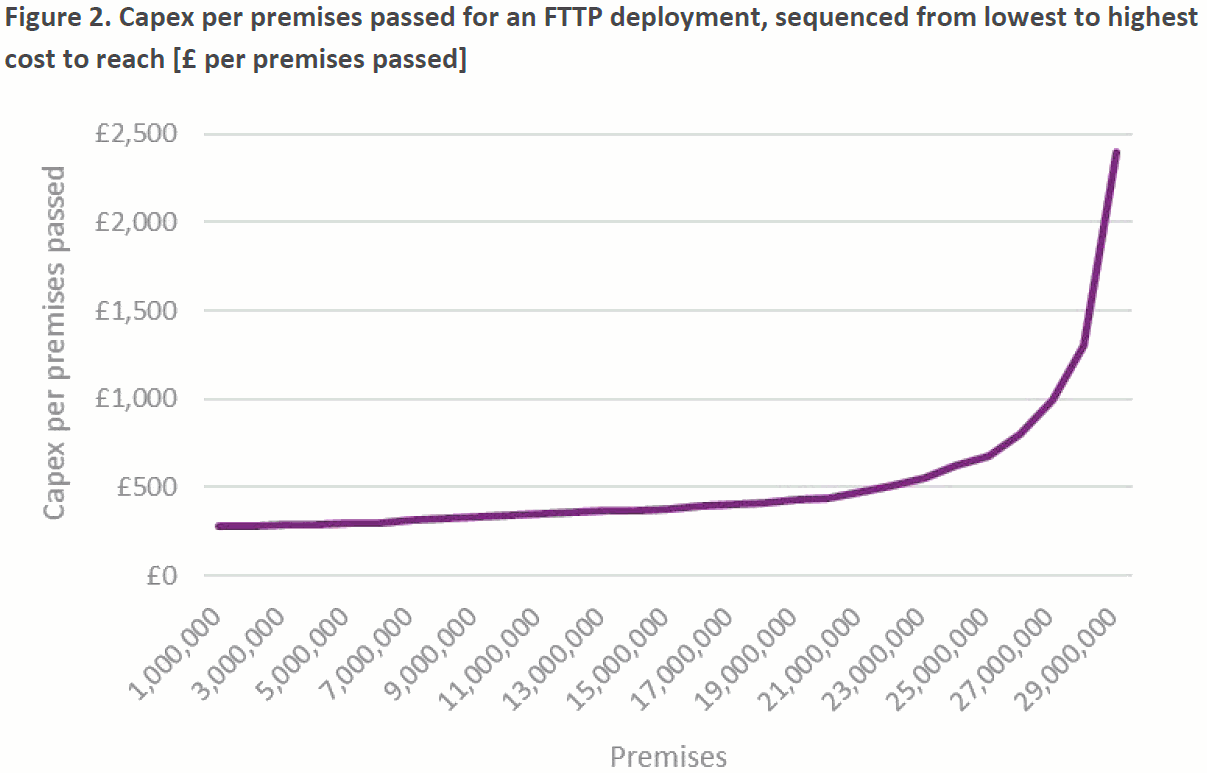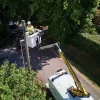Ofcom UK Examines the Cost of Deploying Full Fibre Broadband
Ofcom has today opened an interesting new consultation, which asks for industry feedback on their approach to modelling the costs of building “full fibre” networks across the United Kingdom (i.e. those used to support mobile 5G services, business connectivity or FTTH broadband for homes etc.).
At present the Government has committed to deliver ultrafast Gigabit capable “full fibre” (FTTP) broadband ISP connections to 10 million UK premises by 2022, then 15 million by 2025 and there’s also an aspiration for “nationwide” coverage by 2033 (here). Various operators are supporting this target with their own commercial and state aid supported efforts (See our ‘Summary of Full Fibre Plans‘).
However there remains a question mark over how much it’s likely to cost – given modern deployment methods, future market/rule changes and existing network coverage – to bring such a network to the entire country. For example, the Future Telecoms Infrastructure Review suggested that tackling the final 10% of predominantly rural premises may require “additional funding” (state aid) of around £3-5bn to support commercial investment (i.e. it’s disproportionately expensive due to the smaller and often sparse communities involved).
Advertisement
Admittedly this assumes that commercial operators would even be willing to help plug the gap (i.e. when we finally reach that stage in a fair few years time), which is by no means certain. The difficulty of agreeing Fibre-to-the-Premises (FTTP) contracts for such areas has recently been highlighted in Wales (here) and may also be contributing to delays in the award of Scotland’s contract (here).
Past a certain point it takes a huge subsidy to move forward and this in turn raises questions about value for money. The new consultation includes a useful illustration, which provides outputs from the “bottom-up model” that Ofcom could use. This indicates that the capital expenditure needed, per premises, to do FTTP for the first c.20 million UK premises is under £500, but above that point it quickly rises to nearly £2,500.

The above figures may actually be quite conservative, although as ever such things depend on the business model and approach to deployment. For example, it’s often more expensive for a heavily regulated commercial operator like Openreach to do FTTP than it is for a social focused (community / volunteer supported) provider like B4RN. This can of course vary by area (e.g. B4RN’s “soft dig” focus on farms/fields would find urban builds more difficult).
Advertisement
Openreach aims to reach 4 million premises by March 2021 with FTTP and there’s an ambition for 15 million by around 2025. After that they also have an aspiration to reach “the majority of the UK, if the right conditions to invest are in place.” Current build costs are around £300 – £400 per premises passed and OR believes that it can “pass around 50% of UK premises within this range of costs” (roughly in keeping with Ofcom’s chart).
Suffice to say that the regulator has decided that it’s now “increasingly important” for them to “understand the costs of deploying fibre networks to support our future regulatory decisions,” which is something they probably should have said a decade ago. This will help to inform their plan to regulate the wholesale fixed telecoms markets for residential and business services together from 2021 (they’ll consult on this in December 2019).
Ofcom’s Proposal (In Brief)
In this document, we set out initial proposals on our approach to modelling the costs of services provided over a fibre network. Specifically:
(i) We intend to use a bottom-up modelling approach to estimate the costs of building an efficient fibre network;
(ii) We set out the proposed design of the modelled fibre network; and
(iii) We set out proposals regarding the design of the cost model.
The new consultation is thus more focused upon how they design the model, rather than the costs (the latter depends upon feedback). Ofcom would like to receive views and comments on the issues raised in their document, by 5pm on 2nd August 2019.
Mark is a professional technology writer, IT consultant and computer engineer from Dorset (England), he also founded ISPreview in 1999 and enjoys analysing the latest telecoms and broadband developments. Find me on X (Twitter), Mastodon, Facebook, BlueSky, Threads.net and Linkedin.
« Virgin Media Preparing New Cloud UI for Hub 3 Broadband Routers


















































Comments are closed